Overview
In this lesson, you will explore the work of Jean-Michel Basquiat and use sketches and words to create your own visual narrative with text.
Grade Level
6-12
Media
Mixed Media
Materials and Tools
- Colored pencils
- Small pieces of note paper
- Paper as large as possible, or several pieces of paper taped together
Optional Materials
- Markers
- Sketch pad
Objectives
You will be using sketches and words to create a visual narrative with text. You will take notice of how, in a specific location in a short period of time, objects, sounds, and smells can remind us of experiences, thoughts, and people. You will experience how complex, layered, and varied our perceptions can be.
In this lesson, you will:
- Pay close attention to the objects, sounds, and smells in a room
- Make sketches and write words to document your reactions to objects, situations, or experiences
- Consider options and select elements to include in your artwork
- Make decisions about color, shape, proportion, and composition
- Layer and combine your sketches with text
Activities
Jean-Michel Basquiat’s richly layered work draws from diverse sources including music, Black experience, pop culture, Black American sports figures, literature, and global art history. With close-looking at works of art from the exhibition, Jean-Michel Basquiat: King Pleasure, this art-making lesson is intended to explore ways to construct visual narratives through layering imagery, text, shape, line, and color.
Step 1: Close Looking: Untitled (Boxeo)
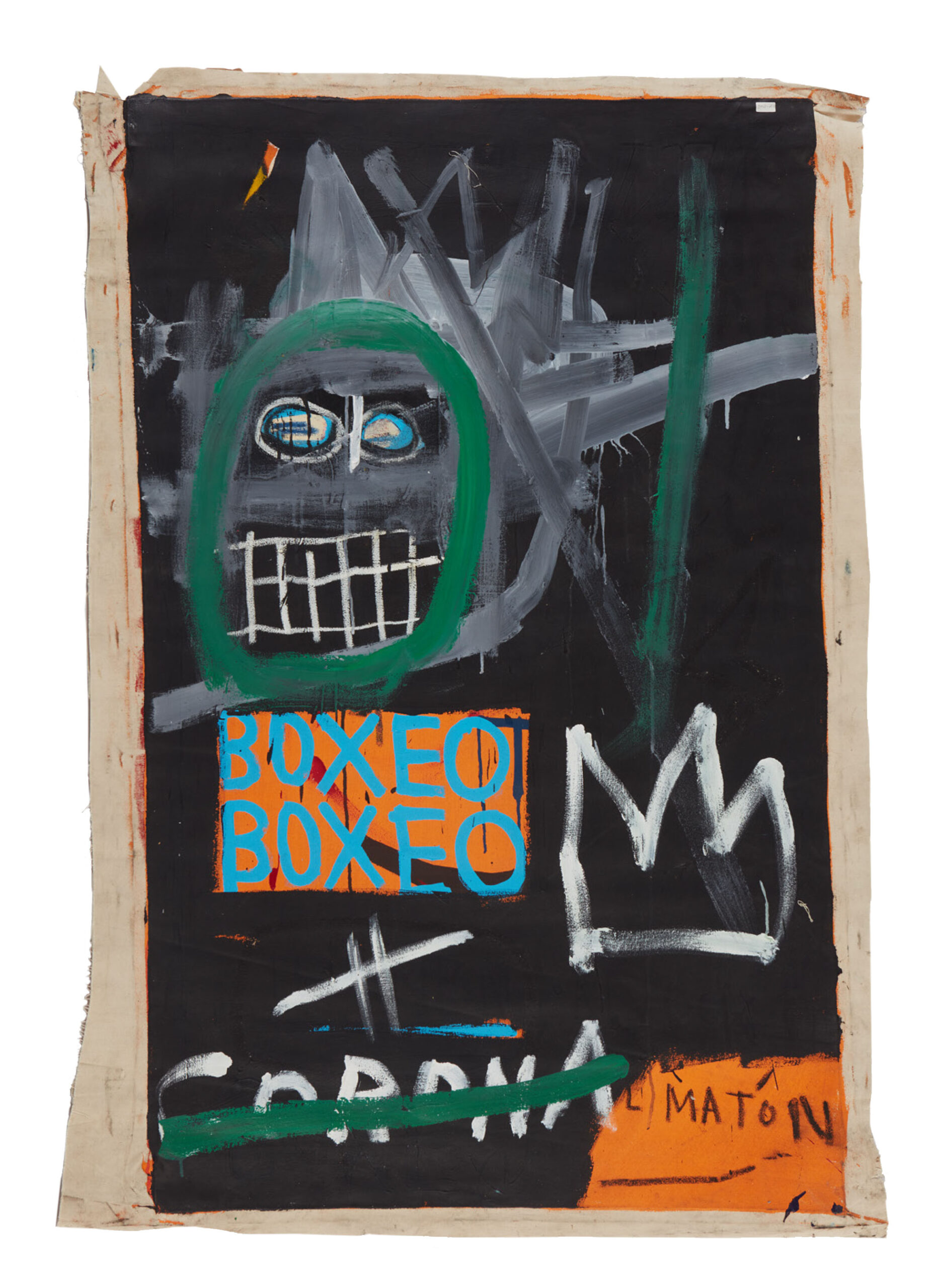
- What stands out to you in this painting?
- How would you describe the colors in this painting? What do they make you think of?
- What words can you find in the painting? What do those words make you think of?
- Basquiat created many layers in this painting. Where can you find evidence of layering? Look for:
- A line or shape painted on top of another line or shape
- A large section of color painted on top of another color
- Parts of the painting where the layer underneath is revealed
- How would you describe the emotions of this painting? What do you see that makes you say that?
Boxeo was a program on the Spanish-language sports channel that Jean-Michel Basquiat used to watch
with his father and sisters on Saturday nights. “Boxeo” is the
Spanish word for boxing. Basquiat’s father,
Gerard, loved boxing. Jean-Michel Basquiat depicted themes and images of boxing in many of his paintings.
- Do you see anything in this painting that makes you think of boxing?
- Do you see anything that makes you think of watching television?
Step 2: Taking Notice and Documenting Your Impressions
Now that you have looked closely at Jean-Michel Basquiat’s artmaking process, use a similar approach
to create your own visual narrative.
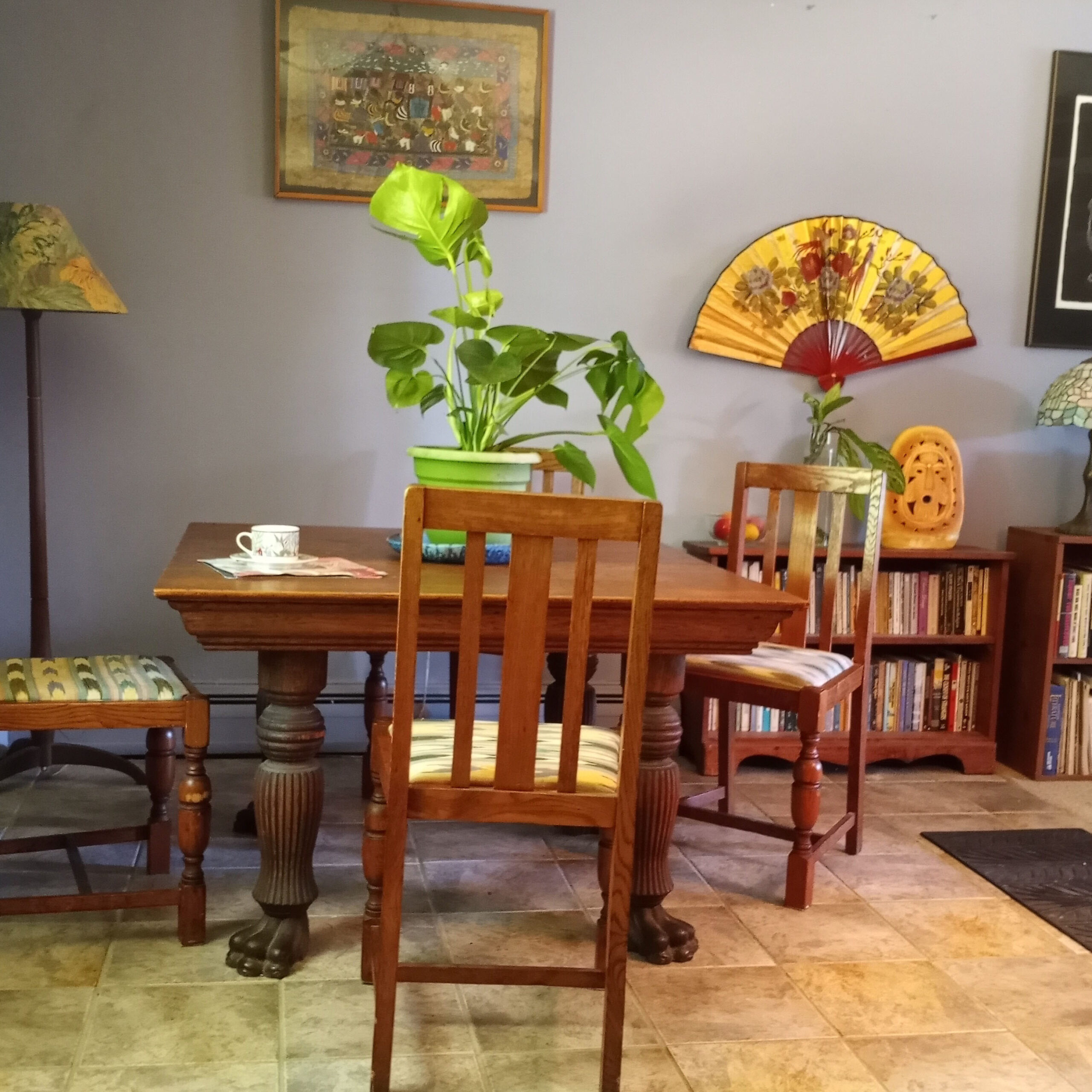
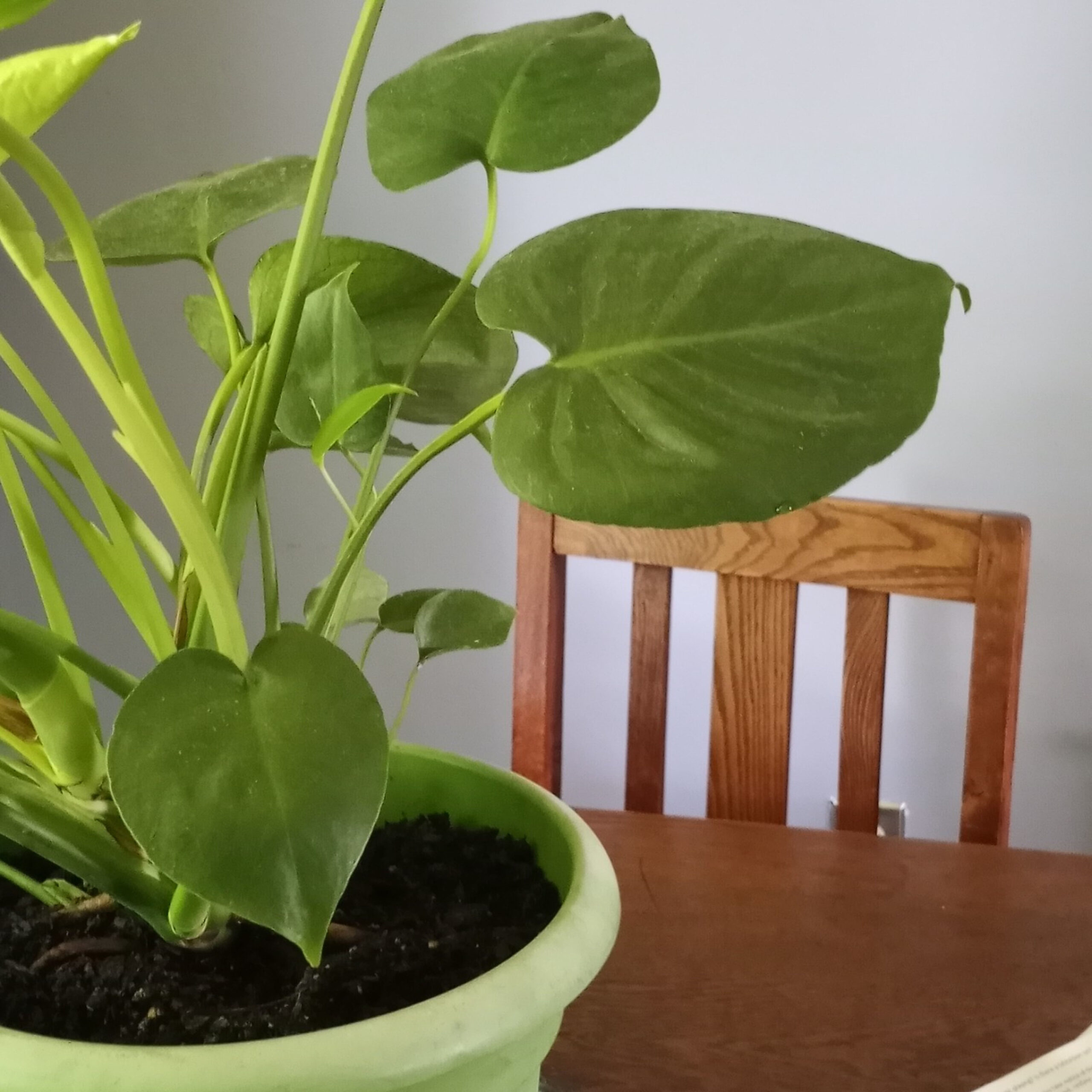
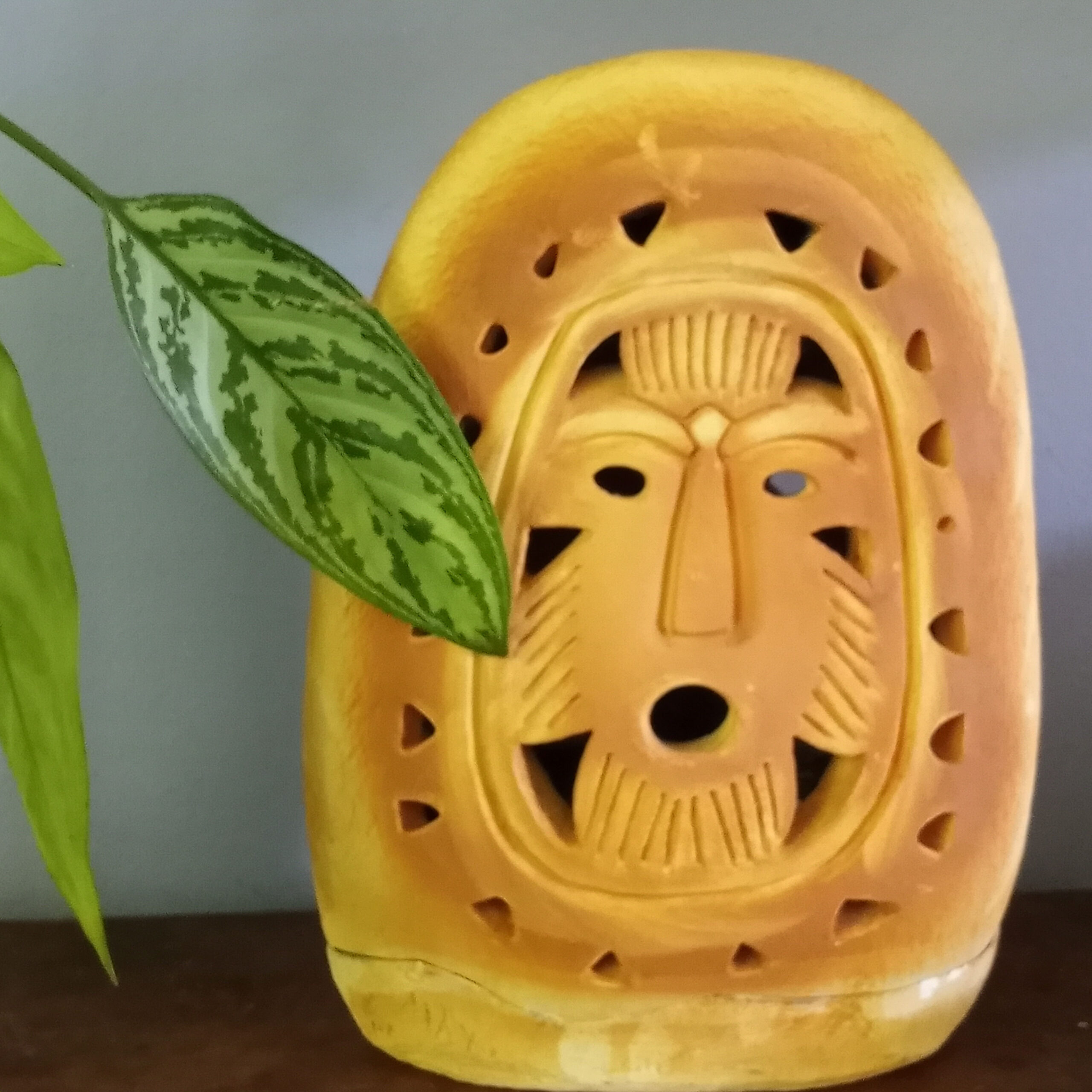

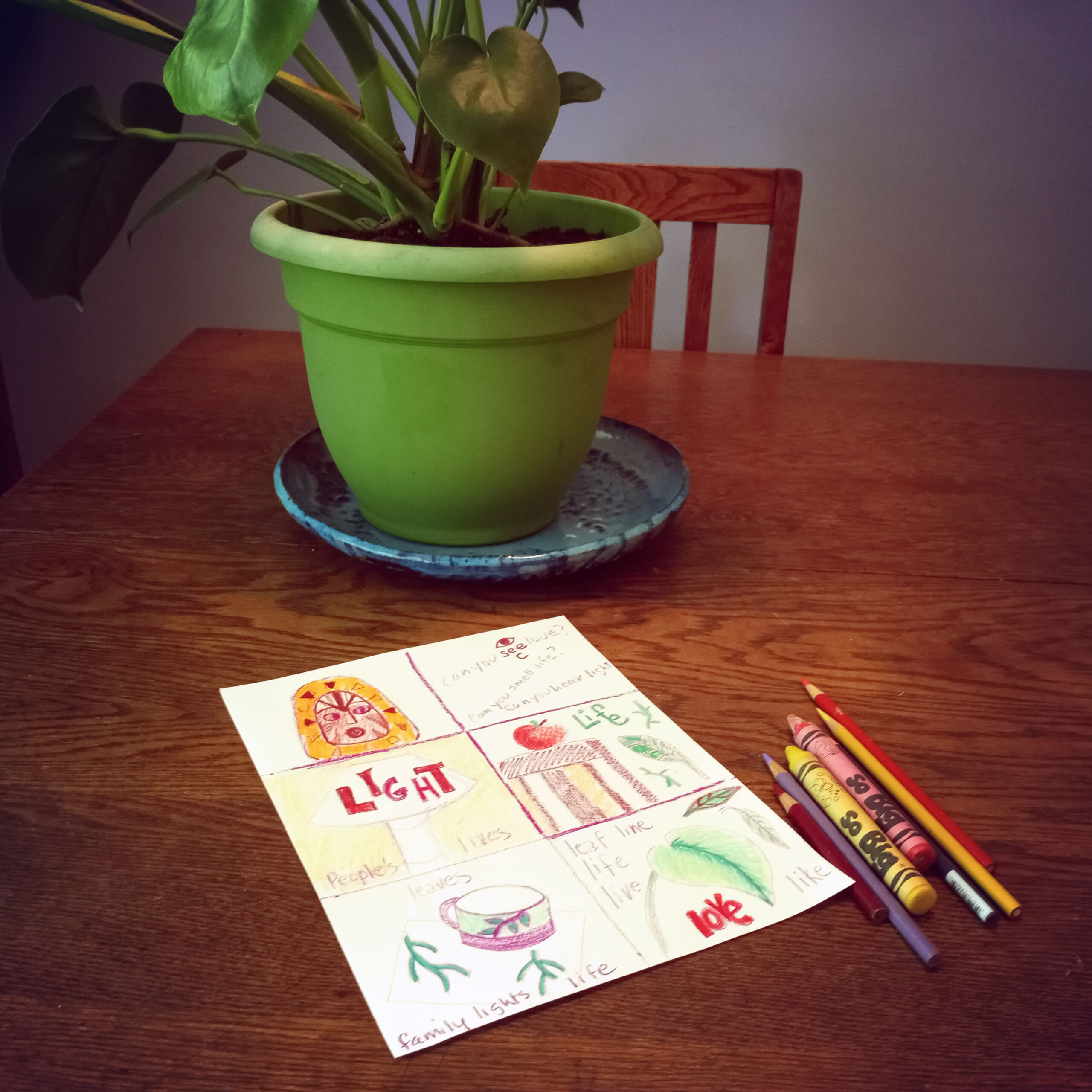
Taking Notice
Go into a room of your choice. Sit down and/or walk around. Spend about eight minutes taking notice of what is in the room by looking closely and experiencing the space through your senses.
- What do you see? Notice colors, textures, shapes, and patterns.
- What objects are in the room? Are there objects that have special significance to you? Do any objects remind you of conversations you have had, or things you have seen or read? Do any of the objects remind you of stories or memories?
- What do you smell in this room? What does that smell remind you of?
- What do you hear? Is there music playing? Is there a television on? Are there sounds from outside the room?
- What stories or memories come up as you take notice of the elements in the room?
- Pay attention to how you feel. Are you relaxed, restless, calm, curious?
Brainstorming your Impressions
When you are ready, divide a sheet of paper into six squares and make sketches of things you noticed. Write a few words or phrases that express the senses, thoughts, and memories
that came up for you. For example, if there is a photo of a family outing, sketch it and write a few words that describe your memories of that event. If there is a song playing, sketch and write your impressions of the song.
Step 3: Selecting a Focus
Review the sketches and phrases that you created during your brainstorming process.
- Which words and images stand out to you?
- Which objects, words, or memories have the most meaning for you?
- Are there sketches and words that are related to each other
- Is there a theme that connects these words and images together?
- Decide which elements from your sketches you will include in your final artwork.
Step 4: Developing Your Image
Begin Drawing
Take the large piece of paper and decide whether you want to work at a table, hang your paper on a wall, or spread it on the floor. Begin drawing the most important elements from your sketch. You can make these elements stand out by drawing them large, placing them prominently, or adding details and color.
Add Text
Write your text in a size that reflects its importance. You can write next to, on top of, and/or under the drawn objects. Add details that will help convey your visual narrative.
Consider Your Composition
Consider how and where you position the various elements of your composition. You might have many colorful shapes and words in your drawing or you might have only a few.
- Are there some phrases and shapes that need to be close to one another or layered on top of each other?
- Would you like to emphasize an element by repeating it or making it into a pattern?
- Continue drawing and writing on your paper until you have expressed a visual narrative.
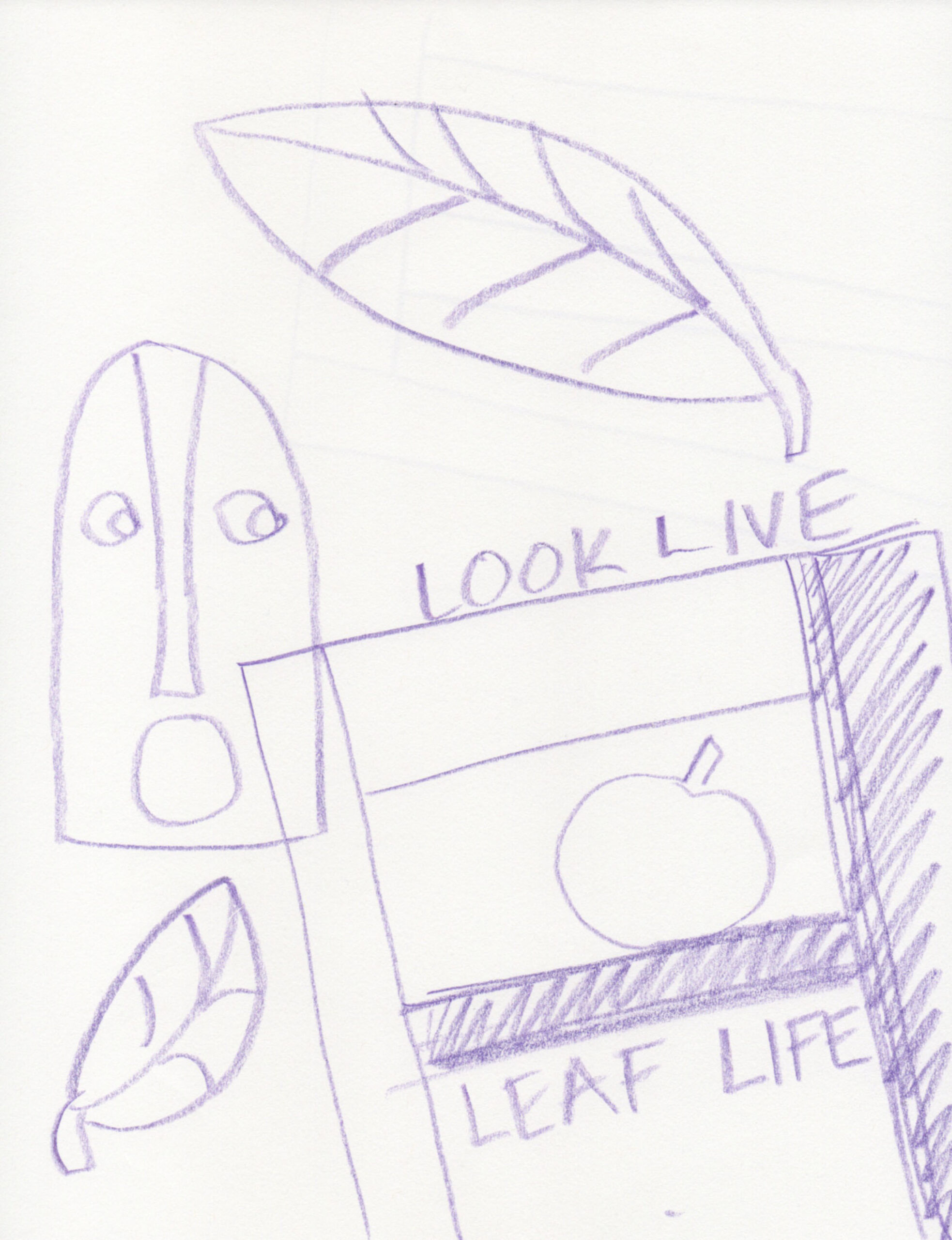

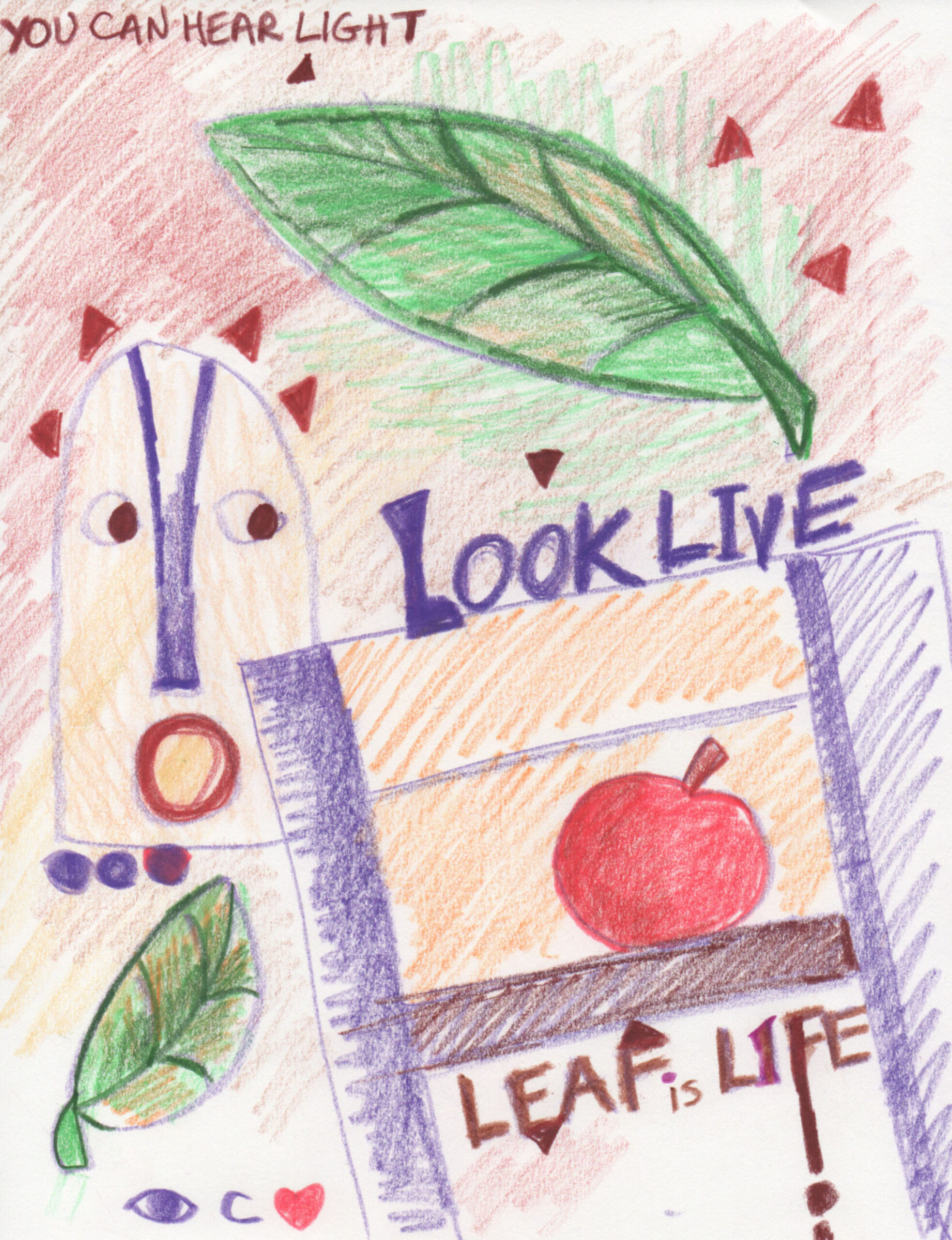
Step 5: Reflection
Look at your drawing and consider the following questions:
- In one or two sentences, how would you describe the story your artwork is telling?
- Are there elements of your drawing that have personal meaning to you? Which ones, and why?
- Where did you layer images and text?
- What title will you give your work? Why?
- What feeling or mood does your artwork inspire?
- How would you describe your creative process?
- What questions do you think viewers might have about your work?
Further Explorations
To further develop your visual narrative, try:
- Using family photos and/or magazine clippings to express memories of people and experiences
- Adding collaged construction paper shapes to your drawing
- Drawing with oil pastels or colored markers to achieve strong, bold colors
- Showing your artwork to friends and family and explaining your creative process. Try using some of the
art vocabulary introduced in this lesson or think of some new words to describe your process. - Inviting friends and family to share their ideas and questions about your work
Step 6: Close Looking: Hollywood Africans in Front of the Chinese Theater with Footprints of Movie Stars

- What shapes and lines stand out to you in this painting?
- What do you notice about the colors?
- What words and/or images do you see repeated? Where do you see them?
- What do you notice about the three figures? How would you describe them?
- What do the figures have in common? What makes each of these figures unique?
- What does the title make you think of? What connections can you make between the painting and its title?
This painting is one of a series that feature images and text that reference stereotypes of Black Americans in the entertainment industry. It was painted while Basquiat was on an extended visit to Los Angeles in 1983.
The trio of figures depicts the artist with two friends who had traveled with him from New York, the hip hop musician Rammellzee and the painter Toxic. They called themselves the Hollywood Africans as a social and political statement against the stereotypical portrayals of Black people in Hollywood.
- What do you see in the painting that connects to this information?
- How did Basquiat tell this story in words and images?
Vocabulary
Visual narrative: telling a story with images using photographs, drawings, paintings, collages, and/or video
Layer: to place on top of
Close looking: observing something intently and carefully
Brainstorming: considering a wide variety of ideas
Credits
Written, Photographed and Illustrated By:
Robin Holder, Artist Instructor
Lesson Development:
Julie Applebaum, Senior Director
Nicola Giardina, Director of Teaching and Learning
All works ©The Estate of Jean-Michel Basquiat, Licensed by Artestar, New York
KingPleasure.Basquiat.com
Copyright © 2023 Studio in a School NYC LLC
